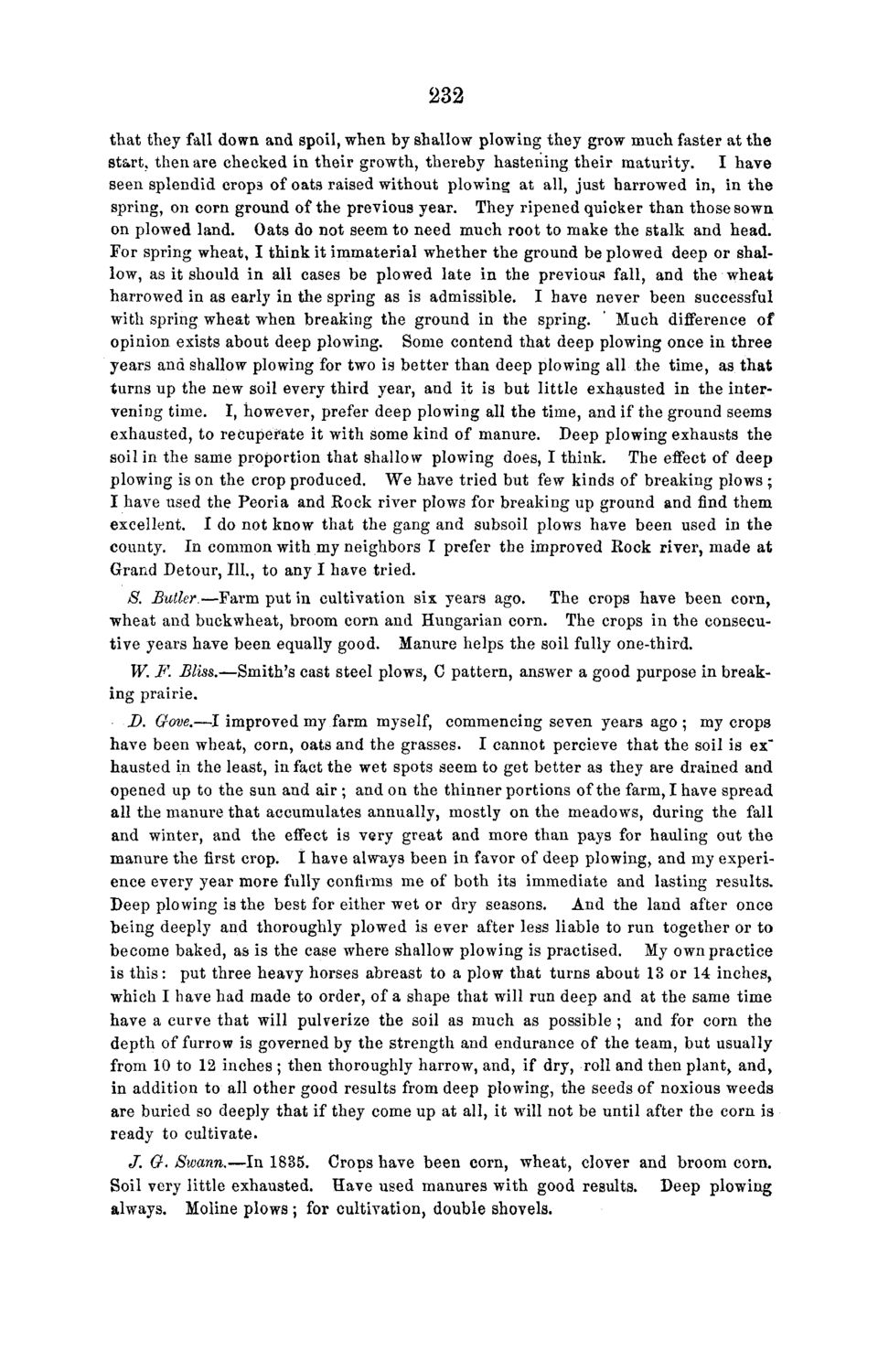| |
| |
Caption: Board of Trustees Minutes - 1868
This is a reduced-resolution page image for fast online browsing.

EXTRACTED TEXT FROM PAGE:
232 that they fall down and spoil, when by shallow plowing they grow much faster at the start, then are checked in their growth, thereby hastening their maturity. I have seen splendid crops of oats raised without plowing at all, just harrowed in, in the spring, on corn ground of the previous year. They ripened quicker than those sown on plowed land. Oats do not seem to need much root to make the stalk and head. For spring wheat, I think it immaterial whether the ground be plowed deep or shallow, as it should in all cases be plowed late in the previous fall, and the wheat harrowed in as early in the spring as is admissible. I have never been successful with spring wheat when breaking the ground in the spring. ' Much difference of opinion exists about deep plowing. Some contend that deep plowing once in three years and shallow plowing for two is better than deep plowing all the time, as that turns up the new soil every third year, and it is but little exhausted in the intervening time. I, however, prefer deep plowing all the time, and if the ground seems exhausted, to recuperate it with some kind of manure. Deep plowing exhausts the soil in the same proportion that shallow plowing does, I think. The effect of deep plowing is on the crop produced. We have tried but few kinds of breaking plows ; I have used the Peoria and Rock river plows for breaking up ground and find them excellent. I do not know that the gang and subsoil plows have been used in the county. In common with my neighbors I prefer the improved Rock river, made at Grand Detour, 111., to any I have tried. JS. Butler.—Farm put in cultivation six years ago. The crops have been corn, wheat and buckwheat, broom corn and Hungarian corn. The crops in the consecutive years have been equally good. Manure helps the soil fully one-third. W. F. Bliss.—Smith's cast steel plows, C pattern, answer a good purpose in breaking prairie. D. Gove.—I improved my farm myself, commencing seven years ago; my crops have been wheat, corn, oats and the grasses. I cannot percieve that the soil is ex" hausted in the least, in fact the wet spots seem to get better as they are drained and opened up to the sun and air ; and on the thinner portions of the farm, I have spread all the manure that accumulates annually, mostly on the meadows, during the fall and winter, and the effect is very great and more than pays for hauling out the manure the first crop. I have always been in favor of deep plowing, and my experience every year more fully confirms me of both its immediate and lasting results. Deep plowing is the best for either wet or dry seasons. And the land after once being deeply and thoroughly plowed is ever after less liable to run together or to become baked, as is the case where shallow plowing is practised. My own practice is this: put three heavy horses abreast to a plow that turns about 13 or 14 inches, which I have had made to order, of a shape that will run deep and at the same time have a curve that will pulverize the soil as much as possible ; and for corn the depth of furrow is governed by the strength and endurance of the team, but usually from 10 to 12 inches ; then thoroughly harrow, and, if dry, roll and then plant, and, in addition to all other good results from deep plowing, the seeds of noxious weeds are buried so deeply that if they come up at all, it will not be until after the corn is ready to cultivate. J. G. Swann.—In 1835. Crops have been corn, wheat, clover and broom corn. Soil very little exhausted. Have used manures with good results. Deep plowing always. Moline plows ; for cultivation, double shovels.
| |